Haotai Liang
Semantic Feature Decomposition based Semantic Communication System of Images with Large-scale Visual Generation Models
Oct 26, 2024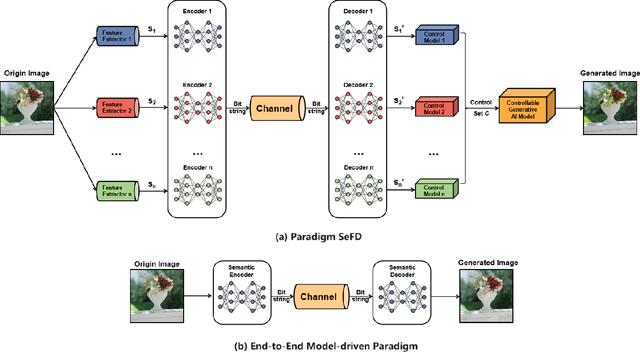

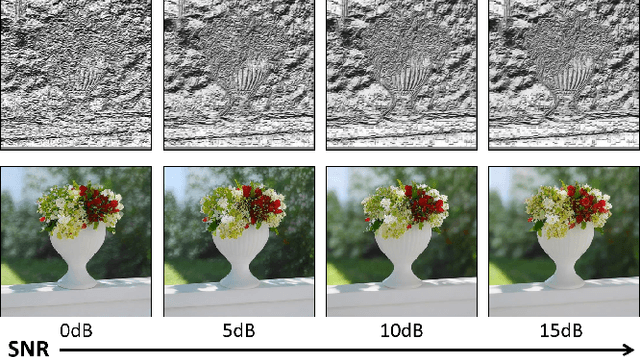
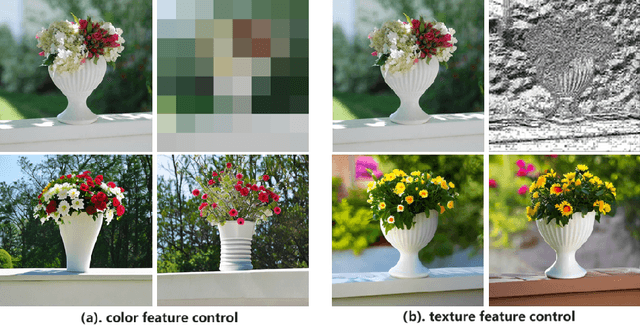
Abstract:The end-to-end image communication system has been widely studied in the academic community. The escalating demands on image communication systems in terms of data volume, environmental complexity, and task precision require enhanced communication efficiency, anti-noise ability and semantic fidelity. Therefore, we proposed a novel paradigm based on Semantic Feature Decomposition (SeFD) for the integration of semantic communication and large-scale visual generation models to achieve high-performance, highly interpretable and controllable image communication. According to this paradigm, a Texture-Color based Semantic Communication system of Images TCSCI is proposed. TCSCI decomposing the images into their natural language description (text), texture and color semantic features at the transmitter. During the transmission, features are transmitted over the wireless channel, and at the receiver, a large-scale visual generation model is utilized to restore the image through received features. TCSCI can achieve extremely compressed, highly noise-resistant, and visually similar image semantic communication, while ensuring the interpretability and editability of the transmission process. The experiments demonstrate that the TCSCI outperforms traditional image communication systems and existing semantic communication systems under extreme compression with good anti-noise performance and interpretability.
Semantic Model Component Implementation for Model-driven Semantic Communications
Sep 27, 2024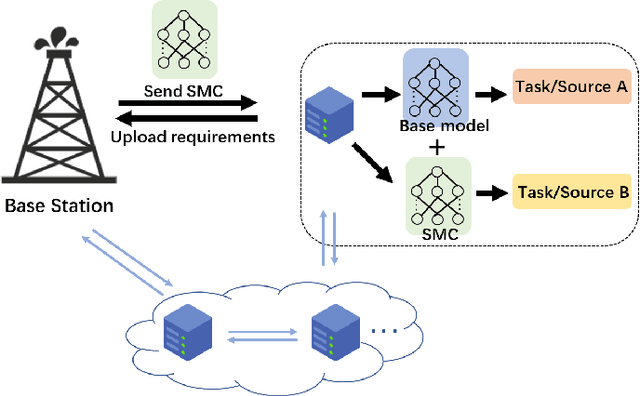

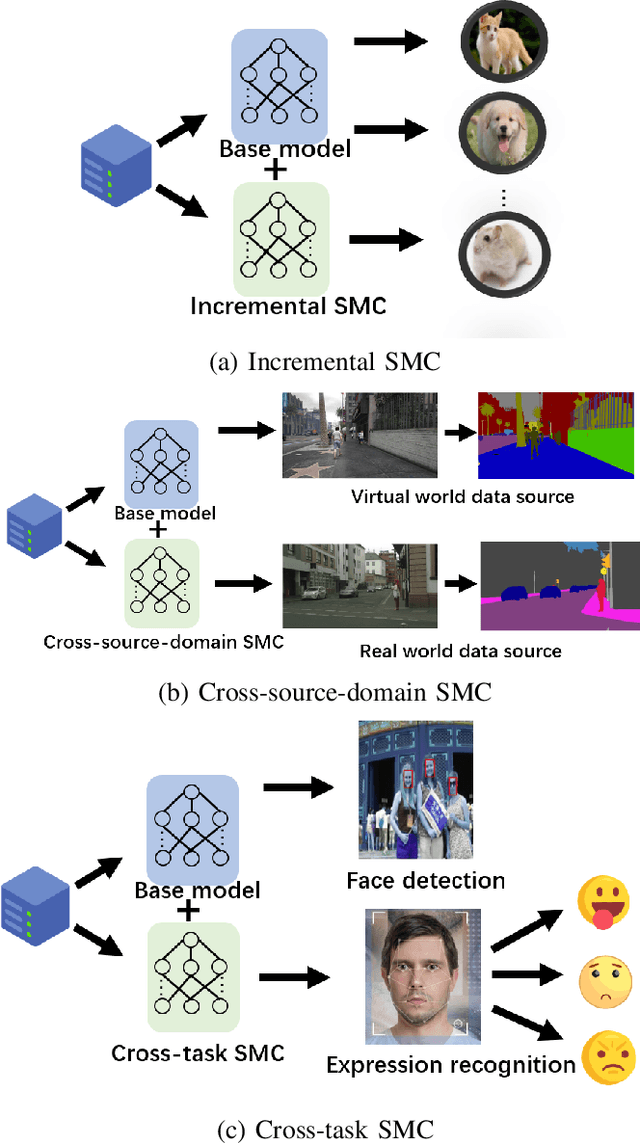
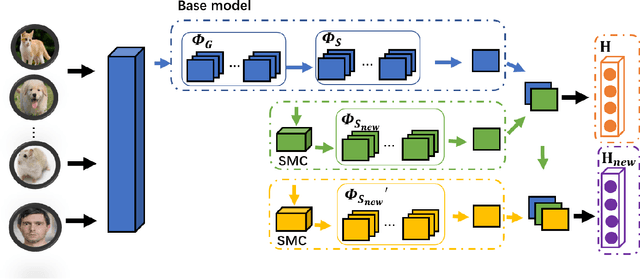
Abstract:The key feature of model-driven semantic communication is the propagation of the model. The semantic model component (SMC) is designed to drive the intelligent model to transmit in the physical channel, allowing the intelligence to flow through the networks. According to the characteristics of neural networks with common and individual model parameters, this paper designs the cross-source-domain and cross-task semantic component model. Considering that the basic model is deployed on the edge node, the large server node updates the edge node by transmitting only the semantic component model to the edge node so that the edge node can handle different sources and different tasks. In addition, this paper also discusses how channel noise affects the performance of the model and proposes methods of injection noise and regularization to improve the noise resistance of the model. Experiments show that SMCs use smaller model parameters to achieve cross-source, cross-task functionality while maintaining performance and improving the model's tolerance to noise. Finally, a component transfer-based unmanned vehicle tracking prototype was implemented to verify the feasibility of model components in practical applications.
Semantic Similarity Score for Measuring Visual Similarity at Semantic Level
Jun 06, 2024Abstract:Semantic communication, as a revolutionary communication architecture, is considered a promising novel communication paradigm. Unlike traditional symbol-based error-free communication systems, semantic-based visual communication systems extract, compress, transmit, and reconstruct images at the semantic level. However, widely used image similarity evaluation metrics, whether pixel-based MSE or PSNR or structure-based MS-SSIM, struggle to accurately measure the loss of semantic-level information of the source during system transmission. This presents challenges in evaluating the performance of visual semantic communication systems, especially when comparing them with traditional communication systems. To address this, we propose a semantic evaluation metric -- SeSS (Semantic Similarity Score), based on Scene Graph Generation and graph matching, which shifts the similarity scores between images into semantic-level graph matching scores. Meanwhile, semantic similarity scores for tens of thousands of image pairs are manually annotated to fine-tune the hyperparameters in the graph matching algorithm, aligning the metric more closely with human semantic perception. The performance of the SeSS is tested on different datasets, including (1)images transmitted by traditional and semantic communication systems at different compression rates, (2)images transmitted by traditional and semantic communication systems at different signal-to-noise ratios, (3)images generated by large-scale model with different noise levels introduced, and (4)cases of images subjected to certain special transformations. The experiments demonstrate the effectiveness of SeSS, indicating that the metric can measure the semantic-level differences in semantic-level information of images and can be used for evaluation in visual semantic communication systems.
Semantic Importance-Aware Based for Multi-User Communication Over MIMO Fading Channels
Dec 26, 2023Abstract:Semantic communication, as a novel communication paradigm, has attracted the interest of many scholars, with multi-user, multi-input multi-output (MIMO) scenarios being one of the critical contexts. This paper presents a semantic importance-aware based communication system (SIA-SC) over MIMO Rayleigh fading channels. Combining the semantic symbols' inequality and the equivalent subchannels of MIMO channels based on Singular Value Decomposition (SVD) maximizes the end-to-end semantic performance through the new layer mapping method. For multi-user scenarios, a method of semantic interference cancellation is proposed. Furthermore, a new metric, namely semantic information distortion (SID), is established to unify the expressions of semantic performance, which is affected by channel bandwidth ratio (CBR) and signal-to-noise ratio (SNR). With the help of the proposed metric, we derived performance expressions and Semantic Outage Probability (SOP) of SIA-SC for Single-User Single-Input Single-Output (SU-SISO), Single-User MIMO (SU-MIMO), Multi-Users SISO (MU-MIMO) and Multi-Users MIMO (MU-MIMO) scenarios. Numerical experiments show that SIA-SC can significantly improve semantic performance across various scenarios.
A Relay System for Semantic Image Transmission based on Shared Feature Extraction and Hyperprior Entropy Compression
Nov 17, 2023
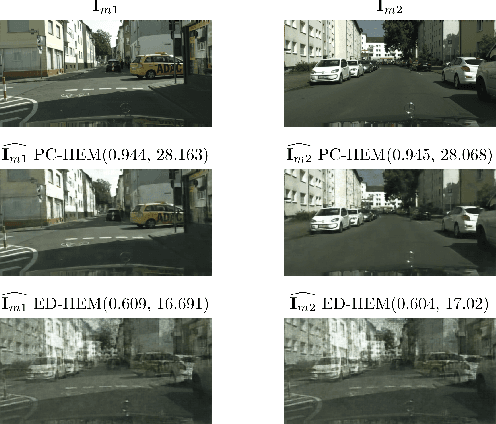
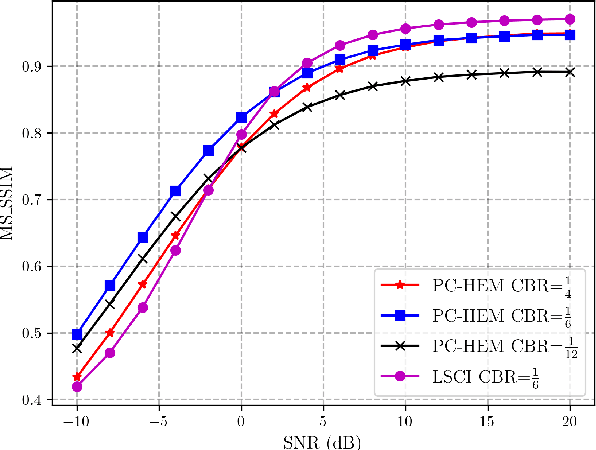
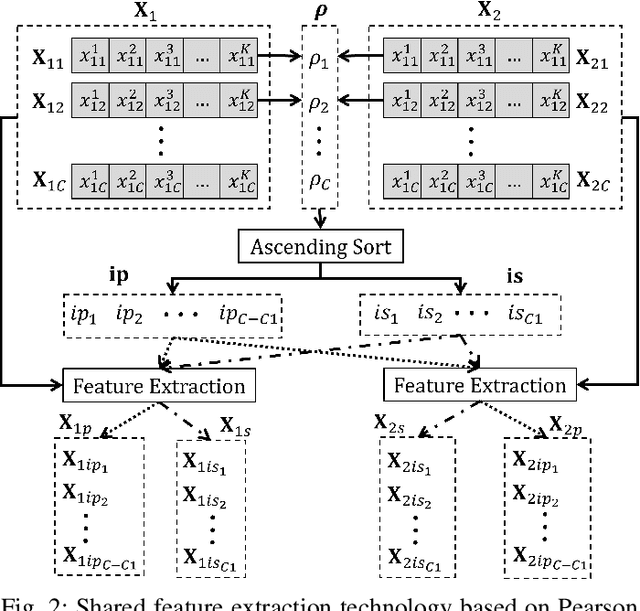
Abstract:Nowadays, the need for high-quality image reconstruction and restoration is more and more urgent. However, most image transmission systems may suffer from image quality degradation or transmission interruption in the face of interference such as channel noise and link fading. To solve this problem, a relay communication network for semantic image transmission based on shared feature extraction and hyperprior entropy compression (HEC) is proposed, where the shared feature extraction technology based on Pearson correlation is proposed to eliminate partial shared feature of extracted semantic latent feature. In addition, the HEC technology is used to resist the effect of channel noise and link fading and carried out respectively at the source node and the relay node. Experimental results demonstrate that compared with other recent research methods, the proposed system has lower transmission overhead and higher semantic image transmission performance. Particularly, under the same conditions, the multi-scale structural similarity (MS-SSIM) of this system is superior to the comparison method by approximately 0.2.
Non-orthogonal multiple access enhanced multi-user semantic communication
Mar 12, 2023



Abstract:Semantic communication serves as a novel paradigm and attracts the broad interest of researchers. One critical aspect of it is the multi-user semantic communication theory, which can further promote its application to the practical network environment. While most existing works focused on the design of end-to-end single-user semantic transmission, a novel non-orthogonal multiple access (NOMA)-based multi-user semantic communication system named NOMASC is proposed in this paper. The proposed system can support semantic tranmission of multiple users with diverse modalities of source information. To avoid high demand for hardware, an asymmetric quantizer is employed at the end of the semantic encoder for discretizing the continuous full-resolution semantic feature. In addition, a neural network model is proposed for mapping the discrete feature into self-learned symbols and accomplishing intelligent multi-user detection (MUD) at the receiver. Simulation results demonstrate that the proposed system holds good performance in non-orthogonal transmission of multiple user signals and outperforms the other methods, especially at low-to-medium SNRs. Moreover, it has high robustness under various simulation settings and mismatched test scenarios.
A Specific Task-oriented Semantic Image Communication System for substation patrol inspection
Jan 09, 2023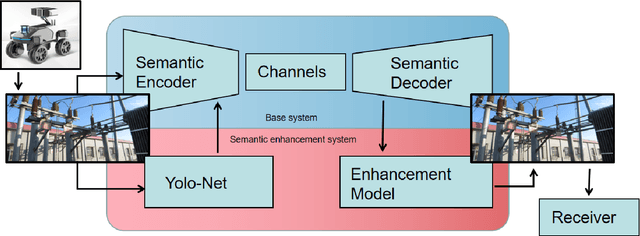

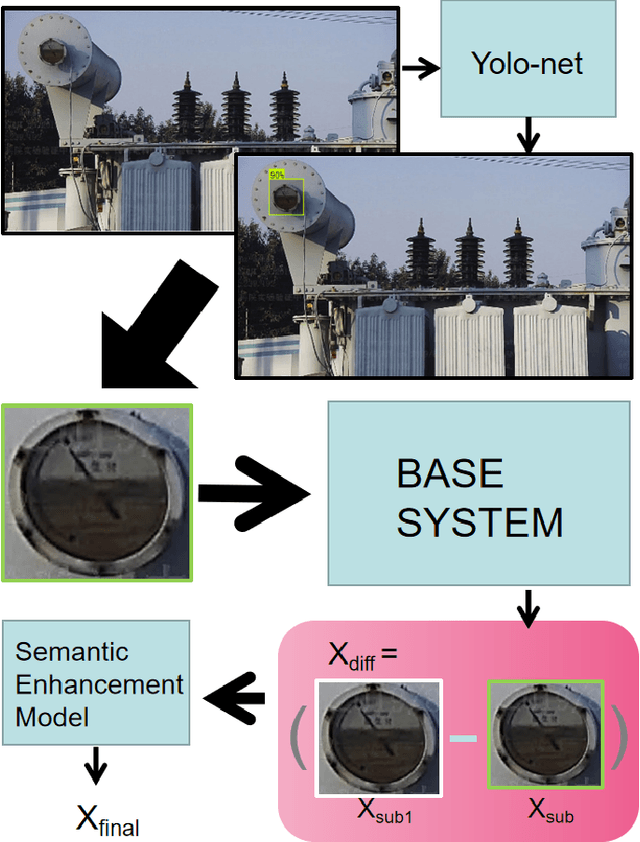
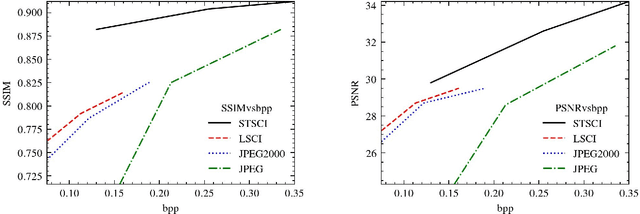
Abstract:Intelligent inspection robots are widely used in substation patrol inspection, which can help check potential safety hazards by patrolling the substation and sending back scene images. However, when patrolling some marginal areas with weak signal, the scene images cannot be sucessfully transmissted to be used for hidden danger elimination, which greatly reduces the quality of robots'daily work. To solve such problem, a Specific Task-oriented Semantic Communication System for Imag-STSCI is designed, which involves the semantic features extraction, transmission, restoration and enhancement to get clearer images sent by intelligent robots under weak signals. Inspired by that only some specific details of the image are needed in such substation patrol inspection task, we proposed a new paradigm of semantic enhancement in such specific task to ensure the clarity of key semantic information when facing a lower bit rate or a low signal-to-noise ratio situation. Across the reality-based simulation, experiments show our STSCI can generally surpass traditional image-compression-based and channel-codingbased or other semantic communication system in the substation patrol inspection task with a lower bit rate even under a low signal-to-noise ratio situation.
Innovative semantic communication system
Feb 19, 2022Abstract:Traditional communication systems focus on the transmission process, and the context-dependent meaning has been ignored. The fact that 5G system has approached Shannon limit and the increasing amount of data will cause communication bottleneck, such as the increased delay problems. Inspired by the ability of artificial intelligence to understand semantics, we propose a new communication paradigm, which integrates artificial intelligence and communication, the semantic communication system. Semantic communication is at the second level of communication based on Shannon and Weaver\cite{6197583}, which retains the semantic features of the transmitted information and recovers the signal at the receiver, thus compressing the communication traffic without losing important information. Different from other semantic communication systems, the proposed system not only transmits semantic information but also transmits semantic decoder. In addition, a general semantic metrics is proposed to measure the quality of semantic communication system. In particular, the semantic communication system for image, namely AESC-I, is designed to verify the feasibility of the new paradigm. Simulations are conducted on our system with the additive white Gaussian noise (AWGN) and the multipath fading channel using MNIST and Cifar10 datasets. The experimental results show that DeepSC-I can effectively extract semantic information and reconstruct images at a relatively low SNR.
 Add to Chrome
Add to Chrome Add to Firefox
Add to Firefox Add to Edge
Add to Edge